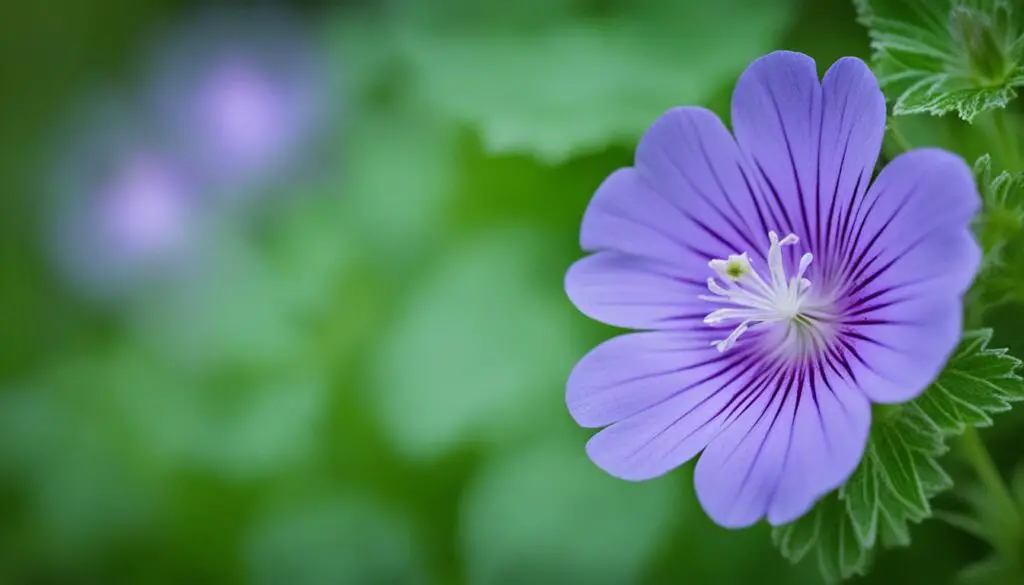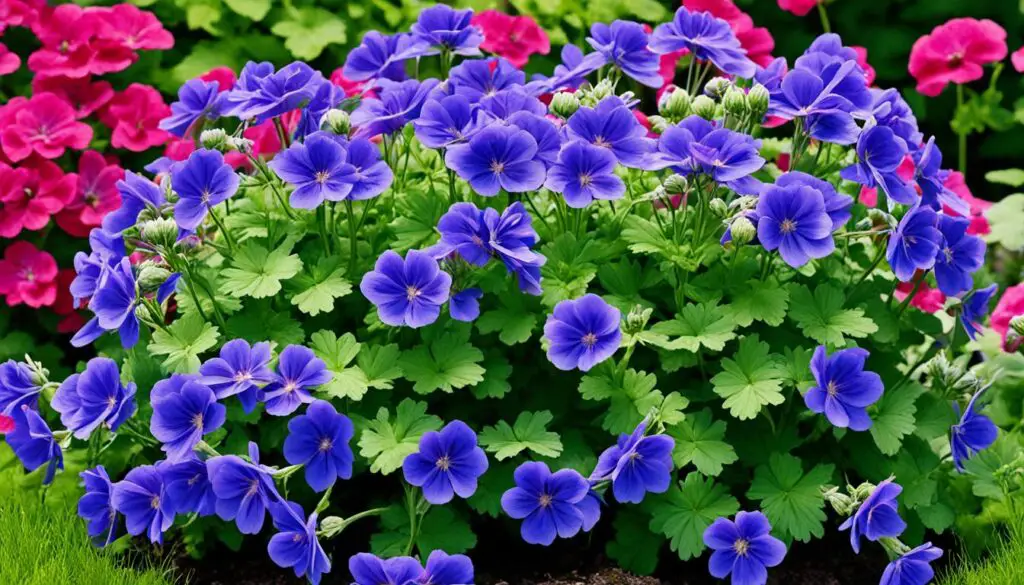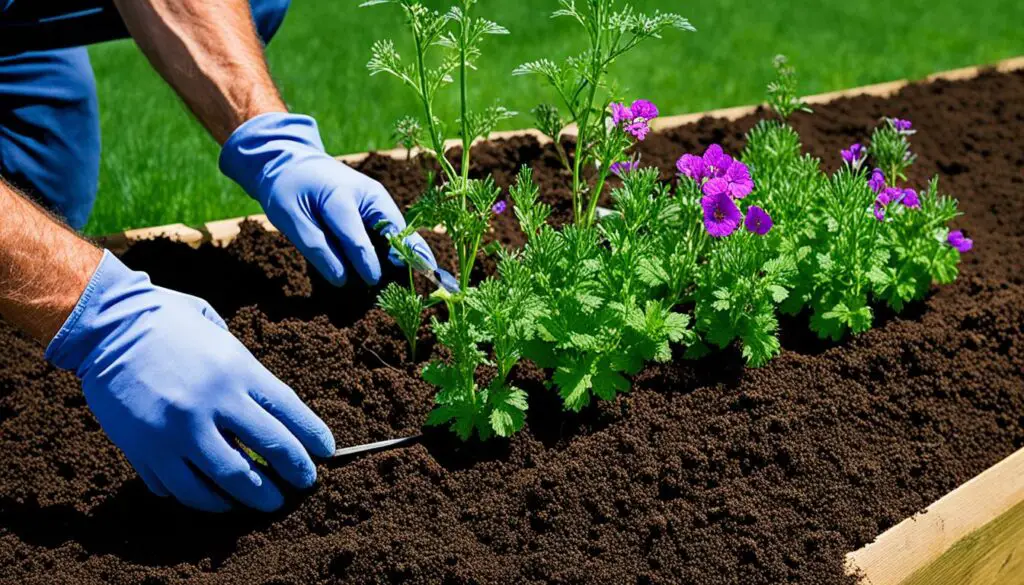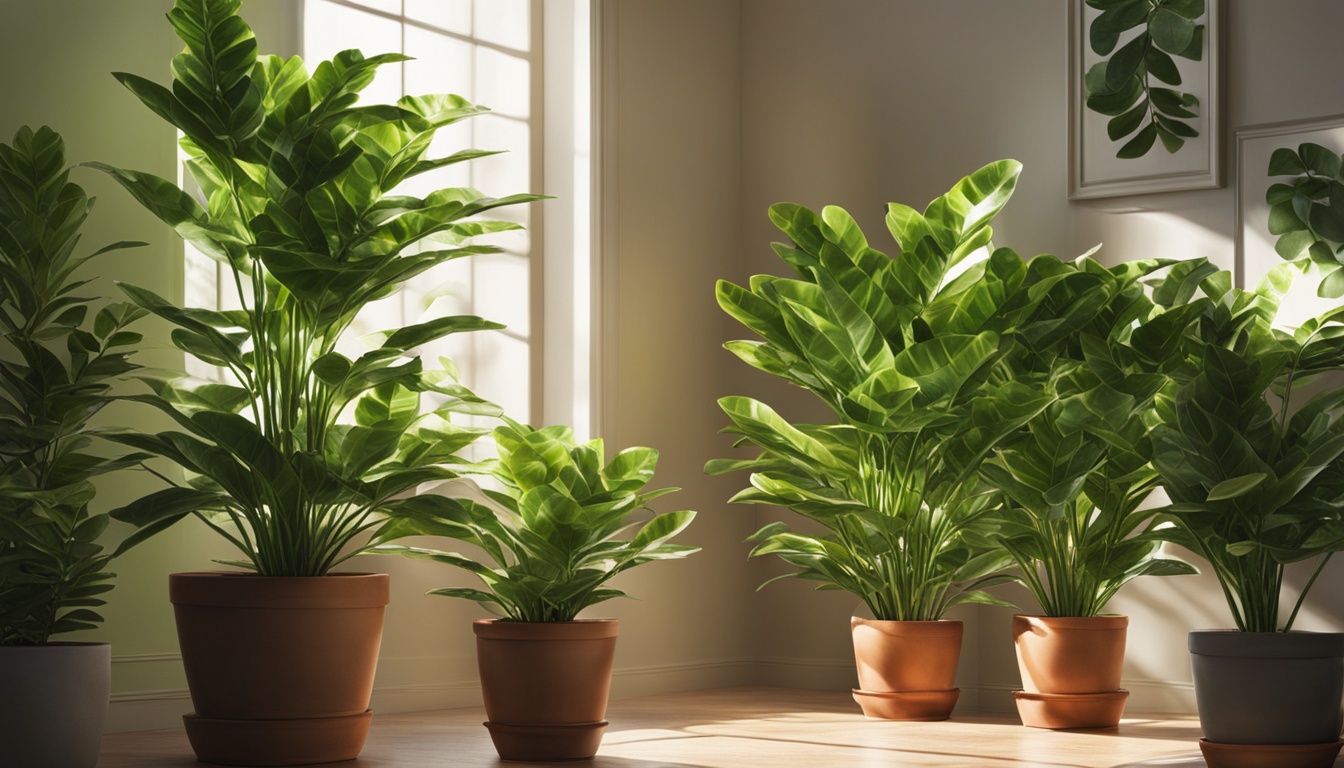I love gardening and have found joy in growing hardy geraniums, or cranesbills. These plants are a must-have in my garden.
They stand out with their many colors, long blooming time, and simple care. In this guide, I’ll show you how to grow and care for cranesbill plants. This will help your garden shine with these beautiful flowers.

Key Takeaways
- Cranesbill geraniums are low-maintenance, drought-tolerant plants that thrive in full sun to partial shade
- These perennials come in a wide range of flower colors, including white, blue, pink, and purple
- Proper site selection, soil preparation, and watering are crucial for optimal growth
- Regular deadheading and division can prolong the blooming season and maintain plant vigor
- Cranesbill geraniums are deer-resistant and attract pollinators like bees and butterflies to your garden
Introduction to Hardy Geraniums (Cranesbill)
Hardy geraniums, also known as cranesbill geraniums, are a joy for gardeners and pollinators alike.
They are different from zonal geraniums, with their globe-shaped blooms. Hardy geraniums have small, cupped flowers in colors like blue, lavender, pink, purple, and white.
What are Hardy Geraniums?
These plants are low-growing and spread out like a carpet. They have flower stalks that weave through other plants.
Hardy geraniums thrive in USDA hardiness zones 3-9, making them versatile for many climates.
Botanical Classification and Characteristics
The Geranium genus includes hardy geraniums, which are different from zonal geraniums.
They have various characteristics, like tight or spreading roots. Their flowers come in many colors, and they can grow from 6 inches to 3 feet tall.
“Hardy geraniums are recognized for their reliability, with most flowering in spring and early summer, and some continuing to bloom for longer periods.”
Hardy geraniums are adaptable to different soils and sunlight levels. They are a low-maintenance addition to any garden.
They come in many types, from sun lovers to shade plants, and from ground cover to standout specimens.
Grow A Cranesbill and Care
Site Selection and Soil Preparation
Choosing the right spot is key for growing cranesbill or hardy geranium. They love full to partial sun for more blooms. They also need medium-moist, well-drained soil that’s neutral to slightly acidic.
When planting, make sure the plant’s crown is at ground level or a bit above. This helps them grow strong.
Watering and Fertilizing
Watering is crucial, especially for plants in full sun. But, avoid overhead watering to prevent fungal problems. These plants usually don’t need a lot of food.
A light, balanced fertilizer in early spring helps. But don’t overfeed them.
By focusing on the right site, soil, watering, and feeding, you’ll help your cranesbill bloom beautifully.

| Characteristic | Value |
|---|---|
| Number of Cranesbill Species | 300 |
| RHS Chelsea Centenary Plant of the Year | Geranium ‘Rozanne’ |
| Geranium ‘Rozanne’ Sales Worldwide | Hundreds of thousands |
| Taller Cranesbill Varieties | Geranium ‘Wargrave Pink’, G. pratense, and G. ‘Ann Folkard’ (over 15 inches in height) |
| Shorter Cranesbill Varieties | 6-8 inches tall, suitable for rockeries or border edging |
| Naturalized Cranesbill Varieties | G. ‘Johnson’s Blue’, G. sanguineum ‘Album’, and G. ‘Wargrave Pink’ |
Hardy geraniums, or cranesbills, come in many types for different gardens. Knowing what they need for site, soil, water, and food will help them flourish. This way, they’ll add color and beauty to your garden.
Maintenance and Propagation
Keeping hardy geraniums, or cranesbill, in top shape is easy. It ensures your plants bloom again and again.
Regular pruning and deadheading are key to this. After the first bloom, cut the plants back to just above ground. This makes the foliage fresh and encourages more blooms.
Pruning and Deadheading
Pruning and deadheading are vital for hardy geraniums. They help with repeated blooming. By removing dead flowers and trimming the plants, they stay neat and grow new. Do this during the growing season to keep your plants looking great and blooming longer.
Dividing and Propagating
Dividing hardy geraniums is a great way to keep them strong and healthy. Do this every 3-5 years in early spring or summer.
Root division refreshes the plants and lets you share them with others or add new ones to your garden.
These plants also spread on their own, but hybrids might not produce the same plants from seed. Seed propagation is fun for trying new types, but remember, the new plants might not look just like the original.

With the right care and propagation, your hardy geraniums will thrive for many years. A bit of pruning, deadheading, and division will give you repeated blooming and a garden full of life.
Popular Hardy Geranium Varieties
I’m thrilled to share some top picks in hardy geraniums. With hundreds of species and cultivars, the choices are endless.
The Geranium ‘Johnson’s Blue’ is a favorite, known for its sky-blue flowers and thriving in zones 4 to 8. Another gem is the Geranium sanguineum, or “bloody cranesbill,” which blooms in zones 3 to 9 with reddish-purple flowers.
For those who love bright colors, Geranium himlayense, or “lilac cranesbill,” is perfect. It blooms in zones 4 to 8 with flowers in violet, indigo, and blue.
The Geranium × oxonianum ‘Wargrave Pink’ is another beauty, with salmon-pink flowers in zones 3 to 8.
The Geranium ‘Gerwat’ Rozanne hybrid is great for its constant violet-blue flowers. It grows 18 to 24 inches tall and thrives in zones 5 to 8.
Looking for early magenta flowers? Check out Geranium ‘Ann Folkard’. For double-white petals, consider Geranium ‘Double Jewel’.
Or, for pure pink double blooms, Geranium ‘Southcombe Double’ is the way to go. These perennials are loved for their beauty and hardiness.
FAQ
What are hardy geraniums?
Hardy geraniums, also known as cranesbill geraniums, are flowering perennials. They are different from zonal geraniums with their low-growing, dense plants and flower stalks that weave through other plants.
What are the characteristics of hardy geraniums?
These plants have small, cupped flowers in various colors like blue, lavender, pink, purple, and white. They attract butterflies and bees. They grow well in USDA hardiness zones 3-9, depending on the type.
How do I select a site and prepare the soil for growing cranesbill?
Choose a spot with full to partial sun for more blooms. They like medium-moist, well-drained soil that’s neutral to slightly acidic. Make sure the plant’s crown is at or slightly above ground level when planting.
How do I care for my cranesbill plants?
Water them well, especially in full sun, but avoid overhead watering to prevent fungal issues. They don’t need much food, but a light, balanced fertilizer in early spring helps.
How do I maintain and propagate my cranesbill plants?
Keep them tidy by pruning and deadheading. Shearing them back after the first bloom encourages more flowers. Division is the best way to propagate, in early spring or summer, to keep them healthy.
What are some popular hardy geranium varieties to consider?
Popular varieties include Geranium ‘Johnson’s Blue’, Geranium sanguineum, Geranium himlayense, Geranium × oxonianum ‘Wargrave Pink’, Geranium ‘Gerwat’ Rozanne, Geranium ‘Ann Folkard’, Geranium ‘Double Jewel’, and Geranium ‘Southcombe Double’.



